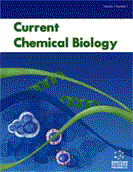Abstract
Plant cytosolic glutathione transferases (GSTs) belong to an ancient enzyme superfamily with multiple and diverse functions which are important in counteracting biotic and abiotic stress. GSTs catalyze the conjugation of xenobiotics and endogenous electrophilic compounds with glutathione (GSH), leading to their detoxification. GSTs not only catalyze detoxification reactions but they are also involved in GSH-dependent isomerization reactions, in GSH-dependent reduction of organic hydroperoxides, biosynthesis of secondary metabolites, and exhibit thioltransferase and dehydroascorbate reductase activity. The applications of ‘omics’ technologies have allowed the classification of GSTs and the study of their evolution and sequence diversity, while enzymology has provided powerful insights into their catalytic role. This review focuses on plant GSTs, and attempts to give an overview of the new insights into their catalytic function and biological role in biotic and abiotic stress tolerance mechanisms in plants.
Keywords: Abiotic stress, biotic stress, glutathione transferase, herbicide detoxification.
Graphical Abstract
Current Chemical Biology
Title:Plant Glutathione Transferases: Structure, Antioxidant Catalytic Function and in planta Protective Role in Biotic and Abiotic Stress
Volume: 8 Issue: 2
Author(s): Evangelia Chronopoulou, Kassiani Kontouri, Marianna Chantzikonstantinou, Fotini Pouliou, Fereniki Perperopoulou, Georgia Voulgari, Eirini Bosmali, Irene Axarli, Irini Nianiou-Obeidat, Panagiotis Madesis, Athanasios Tsaftaris and Nikolaos E. Labrou
Affiliation:
Keywords: Abiotic stress, biotic stress, glutathione transferase, herbicide detoxification.
Abstract: Plant cytosolic glutathione transferases (GSTs) belong to an ancient enzyme superfamily with multiple and diverse functions which are important in counteracting biotic and abiotic stress. GSTs catalyze the conjugation of xenobiotics and endogenous electrophilic compounds with glutathione (GSH), leading to their detoxification. GSTs not only catalyze detoxification reactions but they are also involved in GSH-dependent isomerization reactions, in GSH-dependent reduction of organic hydroperoxides, biosynthesis of secondary metabolites, and exhibit thioltransferase and dehydroascorbate reductase activity. The applications of ‘omics’ technologies have allowed the classification of GSTs and the study of their evolution and sequence diversity, while enzymology has provided powerful insights into their catalytic role. This review focuses on plant GSTs, and attempts to give an overview of the new insights into their catalytic function and biological role in biotic and abiotic stress tolerance mechanisms in plants.
Export Options
About this article
Cite this article as:
Chronopoulou Evangelia, Kontouri Kassiani, Chantzikonstantinou Marianna, Pouliou Fotini, Perperopoulou Fereniki, Voulgari Georgia, Bosmali Eirini, Axarli Irene, Nianiou-Obeidat Irini, Madesis Panagiotis, Tsaftaris Athanasios and Labrou E. Nikolaos, Plant Glutathione Transferases: Structure, Antioxidant Catalytic Function and in planta Protective Role in Biotic and Abiotic Stress, Current Chemical Biology 2014; 8 (2) . https://dx.doi.org/10.2174/2212796809666150302213733
| DOI https://dx.doi.org/10.2174/2212796809666150302213733 |
Print ISSN 2212-7968 |
| Publisher Name Bentham Science Publisher |
Online ISSN 1872-3136 |
 11
11
- Author Guidelines
- Bentham Author Support Services (BASS)
- Graphical Abstracts
- Fabricating and Stating False Information
- Research Misconduct
- Post Publication Discussions and Corrections
- Publishing Ethics and Rectitude
- Increase Visibility of Your Article
- Archiving Policies
- Peer Review Workflow
- Order Your Article Before Print
- Promote Your Article
- Manuscript Transfer Facility
- Editorial Policies
- Allegations from Whistleblowers
- Announcements
Related Articles
-
Withdrawal Notice: Application of Nanomaterials in Development of Electrochemical Sensors and Drug Delivery Systems for Anticancer Drugs
Current Drug Delivery Peptide-Based Nanoparticle for Ex Vivo and In Vivo Dug Delivery
Current Pharmaceutical Design Dietary Compounds, Epigenetic Modifications and Metabolic Diseases
Current Chemical Biology Future of Protease Activity Assays
Current Pharmaceutical Design Comprehensive Analysis of SARS-COV-2 Drug Targets and Pharmacological Aspects in Treating the COVID-19
Current Molecular Pharmacology Deep Transfer Learning for COVID-19 Prediction: Case Study for Limited Data Problems
Current Medical Imaging Recent Findings on the Application of Toll-like Receptors Agonists in Cancer Therapy
Current Medicinal Chemistry A Cell Culture Model for the Assessment of the Chemopreventive Potential of Dietary Compounds.
Current Nutrition & Food Science Small Molecule Inhibitors of Peptidylprolyl cis/trans Isomerase
Current Enzyme Inhibition Editorial [Hot Topic: Ulcerative Colitis: A Cinderella Story (Guest Editor: Silvio Danese)]
Current Drug Targets Vitamin D Insufficiency and Diabetes Risks
Current Drug Targets Changes in Glutathione, Oxidative Stress and Mitochondrial Membrane Potential in Apoptosis Involving the Anticancer Activity of Cantharidin Isolated from Redheaded Blister Beetles, Epicauta hirticornis
Anti-Cancer Agents in Medicinal Chemistry The Kynurenine Pathway in the Acute and Chronic Phases of Cerebral Ischemia
Current Pharmaceutical Design Discovery of Novel Plant Peptides as Strong Inhibitors of Metalloproteinases
Protein & Peptide Letters Analytical Tools for Detecting Amyloid Beta Oligomerisation and Assembly
Current Pharmaceutical Analysis Synthesis and Antitumor Activity of Novel Pentacyclic Triterpenoid Lantadene D
Letters in Drug Design & Discovery An Automatic Glioma Segmentation System Using a Multilevel Attention Pyramid Scene Parsing Network
Current Medical Imaging Biological Imaging and Spectroscopy of pH
Current Organic Chemistry Calixarene HPLC Phases - Applications
Current Analytical Chemistry Attenuation of Hydroxyl Radical Formation by Extracted Constituent of Moringa oleifera Lam
Current Chemical Biology

















.jpeg)








